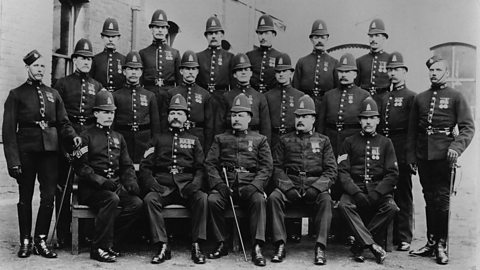The establishment of the Metropolitan Police
The 1829 Metropolitan Police Act established the Metropolitan Police in central London. They covered an area with a radius of seven miles from the centre of London. This was a radical change in the responsibility for enforcing law and order. The Bow Street Runners continued to patrol in their area, and outside the seven-mile radius the police had no authority.
Although this law only covered the central part of London, it was important as it was the start of the modern police force.
1839 Metropolitan Police Act
- The 1839 Metropolitan Police Act extended the area covered by the Metropolitan Police to a 15-mile radius from the centre of London.
- It also ended the authority of all the other policing in London, such as the Bow Street Runners, the Thames River Police and the watchmen.
- It was responsible for the growth of the Metropolitan Police. By 1882 there were 11,700 men.
The extension of police forces across the country in the 19th century
Once the government had taken responsibility for policing in the capital through the creation of the Metropolitan Police, attention was turned to the rest of the country.
A series of laws empowered county and borough councils across the country to set up police forces in their area.
The 1835 Municipal Corporations Act gave towns outside London the power to set up their own police force. The 1839 County Police Act gave each county the power to set up its own police force. Both of these acts were permissive, which meant that they were not compulsory and could be ignored. Only about half of the areas that could establish a police force took advantage of the laws.
The 1856 County and Borough Police Act made it compulsory for all towns and counties to set up a full-time, paid police force. The law said that there should be one policeman for every 1,000 people. The ±«Óătv Secretary appointed inspectors of the constabulary to make sure that the law was obeyed across the country. When a town or county set up a police force that was accepted by the inspectors as satisfactory, the government paid some of the costs of the police force, with the rest of the cost coming from local taxation.
These laws led to the setting up of several hundred police forces across the country. The police were not (and still are not) one police force - there were separate police forces for each part of the country. Each police force had a chief constable, officers and constables.
Responsibility for policing now firmly rested in the hands of central and local government departments. However, in London the Metropolitan Police was controlled by the ±«Óătv Secretary.
